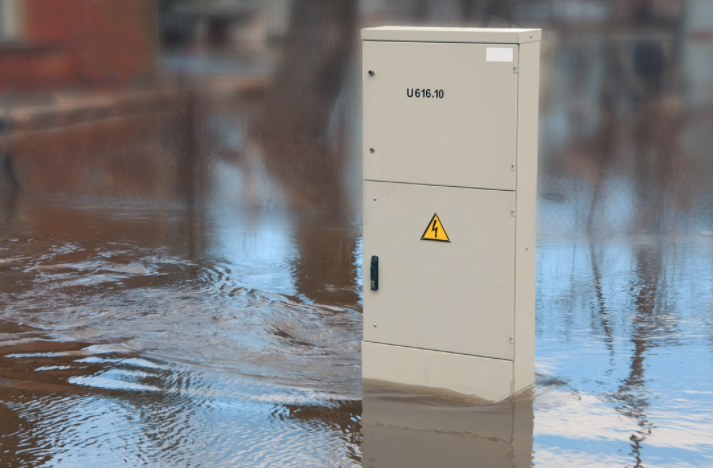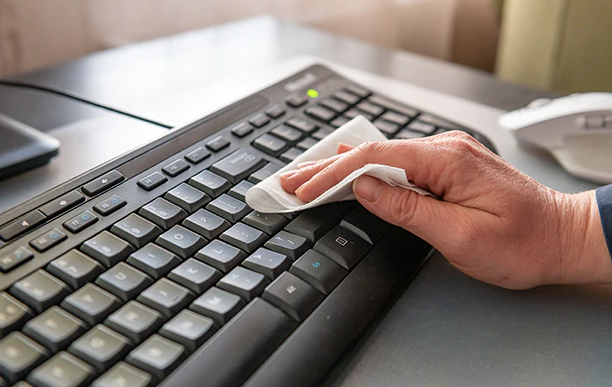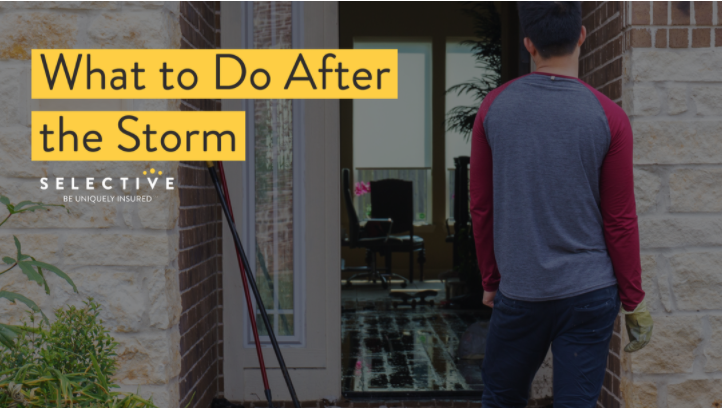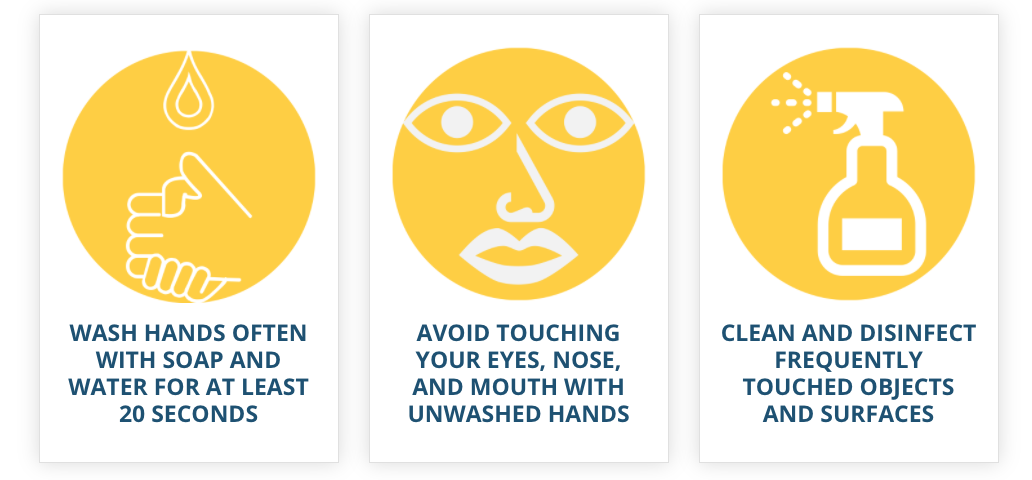Insurance Customer Service Agent
Glascock & Meenan Insurance Agency – Insurance Customer Service Agent
INSURANCE – Personal Lines Agent – 3 years experience needed for busy insurance agency in Prince Frederick. Must have a Maryland insurance license and computer skills. We offer competitive salary and full benefits package.
Glascock & Meenan Insurance Agency
410-535-0222
Walk-ins Welcome!
Walk-ins Welcome!
Business • Home • Auto
Glascock & Meenan Insurance Agency
410-535-0222
5 Ways Mindfulness May Increase Productivity for Your Small Business

Long associated with meditation and relaxation, the practice of mindfulness has become more mainstream in recent years. And, with studies showing that humans aren’t as good at multi-tasking as we think we are, practicing mindfulness or meditation may actually help us be more productive at work.
Ever felt scattered while having 12 browser tabs open on your laptop, while keeping up with a group text on your smartphone and answering emails as they come in? In an age of multi-tasking, mindfulness can help us be in a state of moment-to-moment awareness of our experience. So, can practicing mindfulness help your small business become more productive?
Here are five potential benefits:
1. Mindfulness may help you and your team prioritize better. Multi-tasking is really task-switching, because it’s not possible for the brain to handle two tasks simultaneously. A research study at Stanford University found that multi-tasking actually made participants less able to switch tasks effectively, likely because they were less able to filter out irrelevant distractions.1 Since not every task has the same level of importance to your small business, being able to discern what’s most important can be a critically important skill.
2. Mindfulness can help boost your working memory. Research has shown an increase in working memory among participants in an eight-week mindfulness training.2 That working memory can translate to productivity if employees are able to better recall training and other information useful for their work – and may even help them avoid accidents and injuries at work if they are better able to remember safety practices. Read More
Taking Your Small Business Virtual During COVID-19
With the COVID-19 outbreak, small businesses and their customers are facing unprecedented challenges. While caution must certainly be exercised, many small business owners are conducting business in new ways. From offering an online product demonstration to consulting with a key client, many are turning to virtual delivery methods to preserve revenue streams and strengthen customer loyalty.

Providing customer access to your products and services online can help buoy your business in turbulent times, while also establishing an additional delivery channel going forward. As you consider the move, keep in mind that protecting your company’s data and that of your customers must be a top priority.
You’ll undoubtedly experience some growing pains as you transition from face-to-face customer interactions to videoconferencing and telesales. But, with some persistence and commitment, you might find that your business emerges stronger than ever.
With an eye toward resilience and innovation, here are some ideas for adapting your business:
Embrace Experimentation
A great customer experience is the foundation of any successful business. However, moving your operations to cyberspace will require some practice as you explore new delivery methods. Know that your loyal and first-time customers won’t expect perfection in the early stages. There may be connectivity issues or camera glitches, but you should be able to iron out most of those wrinkles in no time.
One benefit of technology is the wealth of online resources available to enhance your knowledge. For every social media site or teleconferencing tool, there are numerous articles and virtual training modules on how to best leverage these applications to conduct business remotely. You can take learning one step further by enrolling in formal online classes. Watching how more established online businesses conduct training might give you new ideas for your own virtual services. Read More
Distracted Walking Dangers
Distracted walking is becoming a major safety concern. In 2017, almost 6,000 pedestrians were killed.
Causes of Distracted Walking
Interestingly, the rise in distracted walking accidents has occurred at the same time the US experienced an increase in smartphone usage. Millennials between the ages of 18 and 34 are more likely to engage in common distracted walking behaviors. What might be surprising, though, is that evidence indicates women ages 55 and older are the most likely to suffer serious injuries.
While one may suspect that smartphone use contributes to this trend, it is by no means the only cause of inattentiveness while walking. Other possible causes of distracted walking may include personal problems, deadline focus, or complacency.
Common injuries pedestrians risk when they engage in distracted walking include:
– Sprains and strains
– Fractured or broken bones
– Cuts
– Bruises
Many people believe themselves to be the exception when it comes to distracted walking. However, a study by the American Academy of Orthopaedic Surgeons found that 75 percent of respondents said that “other people” walk around distracted, while only 29 percent admitted to being guilty themselves. Moreover, only 46 percent of these considered their behavior “dangerous.”There is scientific evidence suggesting that no one can truly multitask and people can only give their full mental attention to one thing at a time. Trying to keep track of more than one activity or thought process leaves you switching focus constantly and your brain playing catch-up. Read More
Comfort tips for computer users (home office and on the road)
It is important for employees to apply good ergonomic practices even when they are not in a traditional office environment. Whether working at home, in an office or while traveling, ergonomic risk from working at a computer can be reduced with proper posture, good work habits and appropriately adjusted equipment. The following tips should help minimize potential risk factors and maximize your personal comfort.

Table/desk
- Use a desk between 28-30 inches in height
- Desk thickness should not exceed 2 inches
- Allow for adequate leg room with a minimum of 18-inch depth and 24-inch knee width
- Desks should provide depth to place the monitor at least 18-20 inches from the user
- If a desk is not available, use a dining table with a height adjustable chair
- Refrain from using lap desks for long periods of time
- Refrain from working off of a kitchen countertop
- Refrain from sitting on the floor and working
Chair
- Use an adjustable chair with the following features:
- Pneumatic height adjustment
- Lumbar back support
- Height adjustable seat back with locking function
- Adjustable depth seat pan
- Padded armrests that are height and depth adjustable with rounded edges (Optional)
- Consider sitting on a small, moderately firm pillow in order to place the seated elbow height at the level of the keyboard and mouse
- A thin pillow can be used to provide additional support to the lower back
- Refrain from sitting on very soft couches; they do not support the body evenly during extended sitting
- Stand, stretch, and/or walk after sitting every two hours Read More
Trending Issues in Worker Risks Associated with Increased Telecommuting
Many employers have quickly responded to the calls of social distancing to reduce the spread of the coronavirus (COVID-19) by allowing or even requiring employees to work from home. In some cases, companies are contemplating the impact of working from home for the first time. For others, an increase in telecommuting workers is an extension of an existing flexible workplace model.
With unprecedented numbers of telecommuting workers, companies should evaluate the potential for new risks to worker safety. Employers should also implement procedures to ensure that their employees have a safe working environment at home.
Office Ergonomics
Moving from a traditional, ergonomically designed office space to a home environment can be challenging. Finding a suitable work area may be difficult, particularly where employees balance having many, if not all their family members, home during this time. Employees who work from areas like couches, kitchen counters and beds could increase their ergonomic risk. If they are able, employees should instead choose a dedicated workspace where they can work comfortably with good ergonomics in mind.
Other factors to consider include workstation setup, well-defined working hours, the ability to focus in the environment, and the use of breaks to move and stretch.
All these considerations are key to helping employees work safely, comfortably and productively in a home-based environment. Read More
Loss prevention tips for vacant buildings
When properties are left vacant or are unoccupied, there are proactive steps that should be taken to help prevent losses due to heating or electrical system malfunctions, water damage, vandalism or other causes.

Heating/electrical system
- Before the winter months, hire a contractor to inspect the heating system to ensure it is working properly to reduce any potential for freezing.
- If using LP gas, propane gas or oil heat, check the fuel level in the tank periodically to ensure it does not run out of fuel.
- Check the building regularly (at least once a week) to ensure the heating system is operating properly.
- If the heating system is to remain in service, be sure the electric power is not shut off since this will shut down the heating system. Because the electrical service will remain on, inspect the main electrical panel, wiring and outlets. Repair or replace any defective or deficient items.
- If the building is not to be heated, turn off the fuel at the main shut-off valve to reduce the potential for malfunction and explosion. Check the valve periodically to ensure it is working properly. If the electrical system is to be shut off, it should be shut off at the main circuit breaker and the breaker locked open.
- A chimney service should inspect and clean any chimneys to ensure they are free from obstructions, such as nesting birds. Install chimney guard screencaps to help prevent infestation.
Water damage
- If the heating system is a hot water system and is to be turned off completely, drain the plumbing system (or properly winterize it) to prevent damage from freezing.
- If the hot water heating system and/or water pipes will not be drained, install a waterflow sensor and low-temperature sensor to be monitored by the alarm system. Keep the thermostat at a consistent temperature throughout the winter months.
- If the water will not be turned off insulate the water lines that run along exterior walls so that the water supply will be less likely to freeze. If heat tape is used on piping, follow the manufacturer’s instructions closely to prevent fires. Open cabinet doors to allow heat from the room to get into concealed spaces. Drain and shut off outdoor water faucets to prevent vandalism and freezing damage. In residential structures shut off dishwasher and washing machine hoses to prevent serious water damage losses Read More
Stop Losing Money: 3 Risks to Your Business Inventory
For many small businesses (especially retailers), inventory is a large portion of working capital investment and the company’s equity. Inventory losses (even minor ones) can have a great impact on both the value of the company and its profitability. It is important for small business owners to recognize what risks their inventory faces and develop ways to minimize losses.
Let’s look at four risks to small business inventory and what might be done to manage them.

Inventory Shrinkage
Inventory shrinkage occurs when the product amounts on hand don’t measure up to the amount that an inventory sheet says should be there. This can occur from poor record keeping, inaccurate physical counts, or theft.
Here are tactics small businesses use to reduce shrinkage:
- Limit access to areas where inventory is stored.
- Install security cameras in warehouses or storage areas.
- Designate specific employees to receive all incoming inventory. Develop a system for receiving that requires two more people to verify goods received.
- Recheck purchase orders, invoices, shipping receipts and signed packing lists before they are filed.
- Install a point-of-sale system to track outgoing inventory.
- Have all invoices verified twice against order sheets. Choose appropriate shelving that will allow easy access for stocking, counting, rotating stock and cleaning. Organize the stock area to allow for clear observation and easy movement.
- Run a full inventory on a yearly basis, at a minimum. Account for discrepancies that are discovered.
Loss of Perishables
If you have a business that offers food service (such as a restaurant, market, hotel/motel, senior living facility, or even a golf course with a snack bar), spoilage can lead to big losses in a short time. Improper inventory management and handling of stock are the chief causes of these losses. Read more
How to Practice Electrical Safety During Flooding
On average, more deaths occur in the U.S. each year from flooding than from any other type of natural disaster. While the majority of these involve vehicles being swept away, some are due to electrocutions. As water is a natural conductor, the risk of an electrical shock is heightened any time water and electricity are in close proximity. This makes the threat of electrocution during periods of flooding extremely high.

Before the Flood
If you live in an area where there is a possibility that flooding might occur, there are ways to minimize your risk long before bad weather shows up. Ground fault circuit interrupter (GFCI) electrical outlets have been required for bathrooms for years. But they can be used throughout a home with little to no alteration. GFCI outlets have a built-in circuit breaker that will automatically trip if the plug becomes grounded. This safety feature cuts off the flow of electricity.
When the threat of flooding is imminent, it is a good idea to turn off the power in your home while it is still dry. How should you turn off power at the electrical panel box? The panel box has circuit breakers for each circuit as well as a main shut-off switch. You should first flip each individual circuit breaker one at a time and then turn off the main circuit breaker.
If your breaker box is located outside or in a basement that might already be holding water, don’t attempt to turn off the power yourself. Contact your utility company and ask them to kill the power at the meter.
Until that can be accomplished, unplug all electrical devices. If possible, move them to higher locations in the house so they don’t become submerged or even by touched by water. Read more























